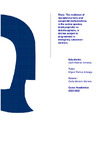Identificador persistente para citar o vincular este elemento:
https://accedacris.ulpgc.es/handle/10553/124838
| Título: | The incidence of neonatal mortality and congenital malformations in the canine species, brachycephalic vs dolichocephalic, in bitches subject to programmed or emergency caesarean sections | Autores/as: | Alemán Almeida, Dácil | Director/a : | Batista Arteaga, Miguel Moreno Marrero, Carla |
Clasificación UNESCO: | 310411 Reproducción | Fecha de publicación: | 2023 | Resumen: | This study determined neonatal mortality and the frequency of conge nital malformations in bitches subject to programmes or emergency Caesarean sections, distinguishing brachycephalic and dolichocephalic breeds. Data from 140 bitches subject to Caesarean sections were registered, as well as their neonates (n=689). The doli chocephalic breed bitches required a larger percentage of emergenc y Caesarean sections (44%; 29/66) compared to the brachycephalic breed bitches (9,5%; 7/74). Total neonatal mortality was 11,17% (77/689), and there were higher rates of neonatal deaths in e mergency surgeries (13,7%; 20/146) compared to those in programmed surgeries (2,95%; 16/543). Bitches < 4 years of age subject to Caesarean sections registered more incidence of neonatal mortality, meanwhile, the lowest incidence was that of bitches > 4 ye ars subject to programmed surgeries. The total rates of neonatal m ortality did not vary between the different breed types, brachycephalic or dolichocephalic, however, it was slightly higher during the resuscitation stage or the first 48 hours after birth i n brachycephalic breeds. The total incidence of congenital malform ations was 4,5%; being higher in brachycephalic breeds; cleft palate and anasarca were the most frequent anomalies representing almost 65% of the total malformations. The breeding bitches th at showed an insufficient state of health manifested a higher inci dence of neonatal malformations (25%; 11/44) in comparison to those with a complete state of health (12%; 9/72). Likewise, litter coming from inbreeding showed more frequent malformations (1 2%; 6/50) than those from outbreeding (1,6%; 8/499). The results s tated that bitches with larger litters (>6) registered a higher incidence of congenital malformations (21,6%; 11/51), in comparison to smaller litters (10,8%, litters < 2 neonates; 13,5%, li tters 3 6 neonates). This study enables us to assure that the corr ect reproductive management is crucial to diminish neonatal mortality and the incidence of congenital malformations. The correct genetic selection of reproducers, an adequate sanitary state of health of the mother, as well as the age of the same, are decis ive aspects when programming a successful gestation. | Departamento: | Departamento de Patología Animal, Producción Animal, Bromatología y Tecnología de Los Alimentos | Facultad: | Facultad de Veterinaria | Titulación: | Grado en Veterinaria | URI: | https://accedacris.ulpgc.es/handle/10553/124838 |
| Colección: | Trabajo final de grado |
En el caso de que no encuentre el documento puede ser debido a que el centro o las/os autoras/es no autorizan su publicación. Si tiene verdadero interés en el contenido del mismo, puede dirigirse al director/a o directores/as del trabajo cuyos datos encontrará más arriba.
Vista completaVisitas
80
actualizado el 01-mar-2025
Descargas
58
actualizado el 01-mar-2025
Google ScholarTM
Verifica
Comparte
Exporta metadatos
Los elementos en ULPGC accedaCRIS están protegidos por derechos de autor con todos los derechos reservados, a menos que se indique lo contrario.
